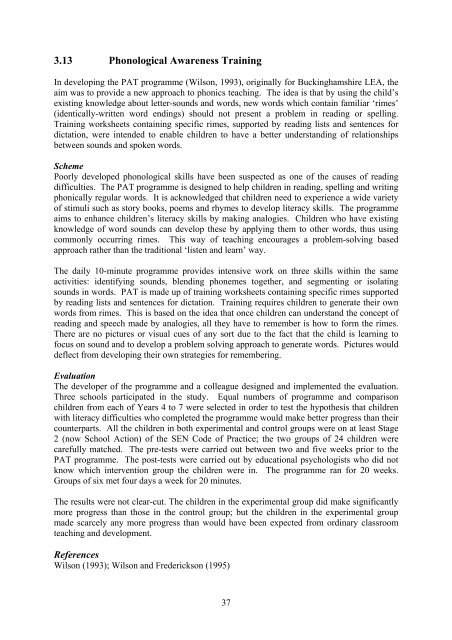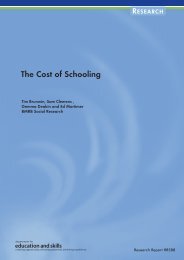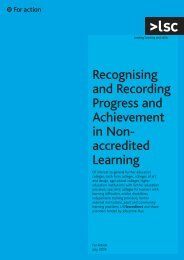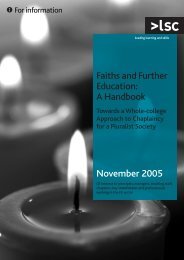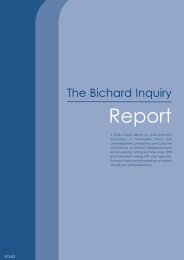What Works for Children with Literacy Difficulties? - Digital ...
What Works for Children with Literacy Difficulties? - Digital ...
What Works for Children with Literacy Difficulties? - Digital ...
Create successful ePaper yourself
Turn your PDF publications into a flip-book with our unique Google optimized e-Paper software.
3.13 Phonological Awareness Training<br />
In developing the PAT programme (Wilson, 1993), originally <strong>for</strong> Buckinghamshire LEA, the<br />
aim was to provide a new approach to phonics teaching. The idea is that by using the child’s<br />
existing knowledge about letter-sounds and words, new words which contain familiar ‘rimes’<br />
(identically-written word endings) should not present a problem in reading or spelling.<br />
Training worksheets containing specific rimes, supported by reading lists and sentences <strong>for</strong><br />
dictation, were intended to enable children to have a better understanding of relationships<br />
between sounds and spoken words.<br />
Scheme<br />
Poorly developed phonological skills have been suspected as one of the causes of reading<br />
difficulties. The PAT programme is designed to help children in reading, spelling and writing<br />
phonically regular words. It is acknowledged that children need to experience a wide variety<br />
of stimuli such as story books, poems and rhymes to develop literacy skills. The programme<br />
aims to enhance children’s literacy skills by making analogies. <strong>Children</strong> who have existing<br />
knowledge of word sounds can develop these by applying them to other words, thus using<br />
commonly occurring rimes. This way of teaching encourages a problem-solving based<br />
approach rather than the traditional ‘listen and learn’ way.<br />
The daily 10-minute programme provides intensive work on three skills <strong>with</strong>in the same<br />
activities: identifying sounds, blending phonemes together, and segmenting or isolating<br />
sounds in words. PAT is made up of training worksheets containing specific rimes supported<br />
by reading lists and sentences <strong>for</strong> dictation. Training requires children to generate their own<br />
words from rimes. This is based on the idea that once children can understand the concept of<br />
reading and speech made by analogies, all they have to remember is how to <strong>for</strong>m the rimes.<br />
There are no pictures or visual cues of any sort due to the fact that the child is learning to<br />
focus on sound and to develop a problem solving approach to generate words. Pictures would<br />
deflect from developing their own strategies <strong>for</strong> remembering.<br />
Evaluation<br />
The developer of the programme and a colleague designed and implemented the evaluation.<br />
Three schools participated in the study. Equal numbers of programme and comparison<br />
children from each of Years 4 to 7 were selected in order to test the hypothesis that children<br />
<strong>with</strong> literacy difficulties who completed the programme would make better progress than their<br />
counterparts. All the children in both experimental and control groups were on at least Stage<br />
2 (now School Action) of the SEN Code of Practice; the two groups of 24 children were<br />
carefully matched. The pre-tests were carried out between two and five weeks prior to the<br />
PAT programme. The post-tests were carried out by educational psychologists who did not<br />
know which intervention group the children were in. The programme ran <strong>for</strong> 20 weeks.<br />
Groups of six met four days a week <strong>for</strong> 20 minutes.<br />
The results were not clear-cut. The children in the experimental group did make significantly<br />
more progress than those in the control group; but the children in the experimental group<br />
made scarcely any more progress than would have been expected from ordinary classroom<br />
teaching and development.<br />
References<br />
Wilson (1993); Wilson and Frederickson (1995)<br />
37


